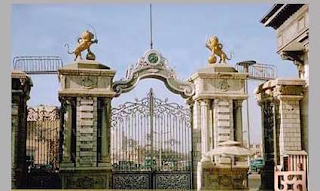The Iranian governments from 1900 CE
to 2024 CE
The political
landscape of Iran from 1900 to 2024 has been marked by significant upheavals,
revolutions, and changes in governance. Here's an overview:
- Qajar
Dynasty (1796-1925):
- At the turn of the 20th century, Iran was
ruled by the Qajar dynasty. This period saw Iran's influence decline as
European powers gained economic and political leverage.
- The early 20th century witnessed
significant social and political unrest, including the Constitutional
Revolution of 1905-1911, which led to the establishment of Iran's first
constitution and parliament in 1906.
- Pahlavi
Era (1925-1979):
- Reza Shah Pahlavi came to power in 1925
after overthrowing the Qajar dynasty. He initiated modernization efforts,
including infrastructure development and reforms aimed at centralizing
power.
- His son, Mohammad Reza Shah Pahlavi,
succeeded him in 1941. Mohammad Reza Shah's rule was marked by rapid
modernization, but also by authoritarianism and repression.
- In 1953, Mohammad Reza Shah's government,
with the support of Western powers, orchestrated the overthrow of Prime
Minister Mohammad Mossadegh, who had nationalized Iran's oil industry.
This event solidified the Shah's grip on power.
- The 1970s saw economic growth fueled by
oil revenues, but also growing discontent among Iranians, particularly
due to political repression and Western influence.
- Islamic
Revolution (1979):
- In 1979, widespread protests and
demonstrations culminated in the Iranian Revolution, led by Ayatollah
Ruhollah Khomeini, resulting in the overthrow of the Pahlavi dynasty and
the establishment of the Islamic Republic of Iran.
- The revolution transformed Iran into an
Islamic republic governed by Islamic law (Sharia) and clerical authority.
Khomeini became the Supreme Leader, with significant power over the
state's affairs.
- Post-Revolutionary
Period (1980-Present):
- The years following the revolution were
marked by internal power struggles, including the Iran-Iraq War
(1980-1988), which devastated both countries.
- The political system evolved, with
elected institutions such as the presidency and parliament coexisting
with unelected bodies like the Guardian Council and Supreme Leader.
- Iran's foreign policy has often been
characterized by anti-Western rhetoric and support for various militant
groups in the region, leading to international isolation and sanctions.
- Despite periodic protests and calls for
reform, the political establishment has maintained control, with
occasional crackdowns on dissent.
Overall, Iran's
political history since 1900 has been characterized by a complex interplay of
domestic and international factors, including modernization efforts,
authoritarian rule, revolutionary upheaval, and the establishment of an Islamic
republic.
The Islamic Revolution and its impact on the position
of Iran (politically, Economically) in the World
The Islamic Revolution
of 1979 had profound and lasting impacts on Iran's position in the world, both
politically and economically, up to 2024:
- Political
Impact:
- The establishment of the Islamic Republic
of Iran led to a dramatic shift in Iran's political system, with power
centralized around religious clerics and institutions.
- Ayatollah Ruhollah Khomeini became the
Supreme Leader, wielding significant authority over the state's affairs.
This theocratic system led to the intertwining of religion and politics,
shaping Iran's domestic and foreign policies.
- Internationally, Iran became a symbol of
anti-Western sentiment, particularly due to its hostility towards the
United States, which was perceived as an imperialist power responsible
for supporting the Shah's regime.
- Economic
Impact:
- The revolution significantly disrupted
Iran's economy, leading to a period of instability and decline. Foreign
investment decreased, and many skilled professionals left the country,
leading to a brain drain.
- The new government implemented policies
aimed at Islamizing the economy, including nationalization of key
industries and redistribution of land. This led to increased government
control and a shift towards a more state-driven economy.
- Economic sanctions imposed by Western
countries, particularly the United States, further isolated Iran and
hindered its economic development. These sanctions targeted Iran's oil
exports, banking sector, and access to international markets, limiting
its ability to trade and attract investment.
- Regional
and Global Relations:
- Iran's revolutionary rhetoric and support
for militant groups, such as Hezbollah in Lebanon and Hamas in Palestine,
fueled tensions with its neighbors and Western powers.
- Iran's pursuit of nuclear capabilities,
under the guise of a civilian nuclear program, raised concerns among the
international community about its intentions and led to diplomatic
standoffs and sanctions.
- Despite its isolation, Iran sought
alliances and partnerships with countries that shared its anti-Western
stance, such as Russia and China. These relationships provided Iran with
economic and political support, albeit to a limited extent.
- Domestic
Policies and Societal Changes:
- The revolution brought about significant
changes in Iran's domestic policies, including the implementation of
Islamic law (Sharia) and restrictions on personal freedoms, particularly
for women.
- Periodic protests and movements for
reform emerged, reflecting tensions between the conservative clerical
establishment and more moderate or reformist elements within Iranian
society. These tensions have shaped Iran's domestic political landscape
and governance.
Overall, the Islamic
Revolution of 1979 fundamentally altered Iran's trajectory, positioning it as a
major player in regional and global affairs while also subjecting it to
economic challenges and international isolation. As of 2024, Iran continues to
grapple with the legacy of the revolution, navigating geopolitical tensions,
economic constraints, and internal political dynamics.

Comments
Post a Comment